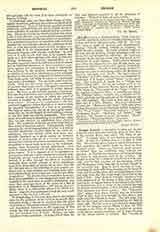

Crivelli, CARLO, an Italian painter. Little is known of his life, and his b. and d. are usually reckoned by his earliest and latest signed pictures, 1468-93. He may have been a pupil of Antonio and Bartolommeo Murano. Crivelli worked entirely in tempora, of which he was a master. He early attained a style of his own and his pictures, though sometimes stiff, are decorative and beautiful in coloring. He could not compose, in the modern sense, but was lavish in his treatment of single figures. Architectural features were often introduced by him and life-like fruits and flowers are placed in vivid relief against beautifully finished marbles. Crivelli, it would seem, worked for twenty-two years in cities lying within the Marches of Ancona, especially near Ascoli. He signed himself “Crivellus” and after 1490, when he was knighted by Ferdinand II of Naples, added “miles” to his signature. The cathedral of Ascoli has a “Virgin and Child” dated 1493. Among his earliest work is the altar-piece of San Silvestro, Massa, signed and dated 1468, while the “Coronation of the Virgin” (1493) in the Oggione Collection, Milan, is probably the latest. The National Gallery, London, has a number of Crivelli’s paintings and the galleries of the Continent are also well supplied. His work is best seen in a half light and at a little distance. His more celebrated pictures are: “Madonna and Child”, 1476, altar-piece for San Domenico, Ascoli (National Gallery, London); “The Dead Christ” (National Gallery); “Pieta” (Cathedral, Ascoli); “Madonna and Saints”, 1491 (Berlin); “St. Francis of Assisi” (Brussels); “Pieta” (Vatican); “Virgin and Saints” (Lateran).
LEIGH HUNT

